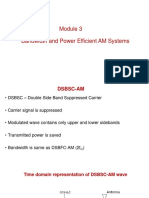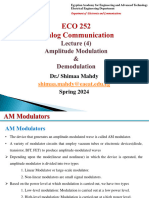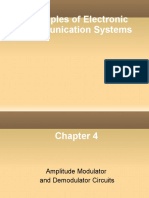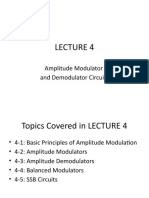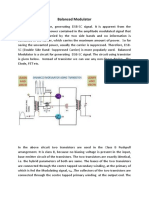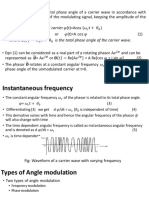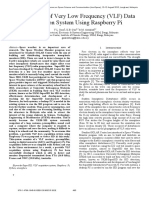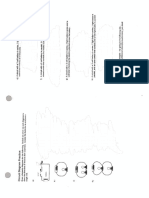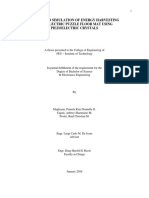0% found this document useful (0 votes)
174 views34 pagesGeneration of AM Signal
The document discusses different types of AM modulators including nonlinear, square law, and balanced modulators. Square law and balanced modulators use nonlinear properties of diodes or transistors to generate an AM signal. In a square law modulator, the input signal is passed through a nonlinear device which produces components at the sum and difference frequencies. A filter then selects the modulated signal. A balanced modulator uses two transistors connected so their signals cancel undesired frequency components, avoiding the need for filtering.
Uploaded by
gkCopyright
© © All Rights Reserved
We take content rights seriously. If you suspect this is your content, claim it here.
Available Formats
Download as PDF, TXT or read online on Scribd
0% found this document useful (0 votes)
174 views34 pagesGeneration of AM Signal
The document discusses different types of AM modulators including nonlinear, square law, and balanced modulators. Square law and balanced modulators use nonlinear properties of diodes or transistors to generate an AM signal. In a square law modulator, the input signal is passed through a nonlinear device which produces components at the sum and difference frequencies. A filter then selects the modulated signal. A balanced modulator uses two transistors connected so their signals cancel undesired frequency components, avoiding the need for filtering.
Uploaded by
gkCopyright
© © All Rights Reserved
We take content rights seriously. If you suspect this is your content, claim it here.
Available Formats
Download as PDF, TXT or read online on Scribd
/ 34
